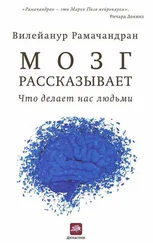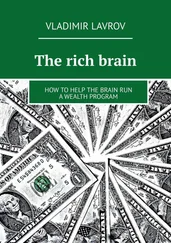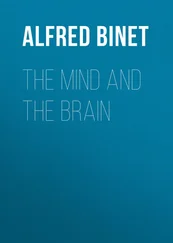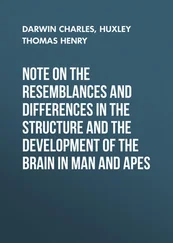“What was your occupation?” I asked Bill.
Bill replied, “I used to be an Air Force pilot.”
“What kind of plane did you fly?”
He named the plane and said, “It was the fastest man-made thing on this planet at that time.” Then he told me how fast it flew and said that it had been made before the introduction of jet engines.
At one point I said, “Okay, Bill, can you subtract seven from one hundred? What’s one hundred minus seven?”
He said, “Oh. One hundred minus seven?”
“Yeah.”
“Hmmm, one hundred minus seven.”
“Yes, one hundred minus seven.”
“So”, said Bill. “One hundred. You want me to take away seven from one hundred. One hundred minus seven.”
“Yes.”
“Ninety six?”
“No.”
“Oh”, he said.
“Let’s try something else. What’s seventeen minus three?”
“Seventeen minus three? You know I’m not very good at this kind of thing”, said Bill.
“Bill”, I said, “is the answer going to be a smaller number or a bigger number?”
“Oh, a smaller number”, he said, showing that he knew what subtraction is.
“Okay, so what’s seventeen minus three?”
“Is it twelve?” he said at last.
I started wondering whether Bill had a problem understanding what a number is or the nature of numbers.
Indeed, the question of numbers is old and deep, going back to Pythagoras.
I asked him, “What is infinity?”
“Oh, that’s the largest number there is.”
“Which number is bigger: one hundred and one or ninety-seven?”
He answered immediately: “One hundred and one is larger”.
“Why?”
“Because there are more digits.”
This meant that Bill still understood, at least tacitly, sophisticated numerical concepts like place value. Also, even though he couldn’t subtract three from seventeen, his answer wasn’t completely absurd. He said “twelve”, not seventy-five or two hundred, implying that he was still capable of making ballpark estimates.
Then I decided to tell him a little story: “The other day a man walked into the new dinosaur exhibit hall at the American Museum of Natural History in New York and saw a huge skeleton on display. He wanted to know how old it was, so he went up to an old curator sitting in the corner and said, ‘I say, old chap, how old are these dinosaur bones?’”
“The curator looked at the man and said, ‘Oh they’re sixty million and three years old, sir.’”
“‘Sixty million and three years old? I didn’t know you could get that precise with aging dinosaur bones. What do you mean, sixty million and three years old?’”
“‘Oh, well,’ he said, ‘they gave me this job three years ago and at that time they told me the bones were sixty million years old.’”
Bill laughed out loud at the punch line. Obviously he understood far more about numbers than one might have guessed. It requires a sophisticated mind to understand that joke, given that it involves what philosophers call the “fallacy of misplaced concreteness”.
I turned to Bill and asked, “Well, why do you think that’s funny?”
“Well, you know”, he said, “the level of accuracy is inappropriate”.
Bill understands the joke and the idea of infinity, yet he can’t subtract three from seventeen. Does this mean that each of us has a number center in the region of the left angular gyrus (where Bill’s stroke injury was located) of our brain for adding, subtracting, multiplying and dividing? I think not. But clearly this region — the angular gyrus — is somehow necessary for numerical computational tasks but is not needed for other abilities such as short-term memory, language or humor. Nor, paradoxically, is it needed for understanding the numerical concepts underlying such computations. We do not yet know how this “arithmetic” circuit in the angular gyrus works, but at least we now know where to look. 10
Many patients, like Bill, with dyscalculia also have an associated brain disorder called finger agnosia: They can no longer name which finger the neurologist is pointing to or touching. Is it a complete coincidence that both arithmetic operations and finger naming occupy adjacent brain regions, or does it have something to do with the fact that we all learn to count by using our fingers in early childhood? The observation that in some of these patients one function can be retained (naming fingers) while the other (adding and subtracting) is gone doesn’t negate the argument that these two might be closely linked and occupy the same anatomical niche in the brain. It’s possible, for instance, that the two functions are laid down in close proximity and were dependent on each other during the learning phase, but in the adult each function can survive without the other. In other words, a child may need to wiggle his or her fingers subconsciously while counting, whereas you and I may not need to do so.
These historical examples and case studies gleaned from my notes support the view that specialized circuits or modules do exist, and we shall encounter several additional examples in this book. But other equally interesting questions remain and we’ll explore these as well. How do the modules actually work and how do they “talk to” each other to generate conscious experience? To what extent is all this intricate circuitry in the brain innately specified by your genes or to what extent is it acquired gradually as the result of your early experiences, as an infant interacts with the world? (This is the ancient “nature versus nurture” debate, which has been going on for hundreds of years, yet we have barely scratched the surface in formulating an answer.) Even if certain circuits are hard-wired from birth, does it follow that they cannot be altered? How much of the adult brain is modifiable? To find out, let’s meet Tom, one of the first people who helped me explore these larger questions.
CHAPTER 2
“Knowing Where to Scratch”
My intention is to tell of bodies changed to different forms.
The heavens and all below them, Earth and her creatures, All change, And we, part of creation, Also must suffer change.
—Ovid
Tom Sorenson vividly recalls the horrifying circumstances that led to the loss of his arm. He was driving home from soccer practice, tired and hungry from the exercise, when a car in the opposite lane swerved in front of him. Brakes squealed, Tom’s car spun out of control and he was thrown from the driver’s seat onto the ice plant bordering the freeway. As he was hurled through the air, Tom looked back and saw that his hand was still in the car, “gripping” the seat cushion — severed from his body like a prop in a Freddy Krueger horror film.
As a result of this gruesome mishap, Tom lost his left arm just above the elbow. He was seventeen years old, with just three months to go until high school graduation.
In the weeks afterward, even though he knew that his arm was gone, Tom could still feel its ghostly presence below the elbow. He could wiggle each “finger”, “reach out” and “grab” objects that were within arm’s reach. Indeed, his phantom arm seemed to be able to do anything that the real arm would have done automatically, such as warding off blows, breaking falls or patting his little brother on the back. Since Tom had been left-handed, his phantom would reach for the receiver whenever the telephone rang.
Tom was not crazy. His impression that his missing arm was still there is a classic example of a phantom limb — an arm or leg that lingers indefinitely in the minds of patients long after it has been lost in an accident or removed by a surgeon. Some wake up from anesthesia and are incredulous when told that their arm had to be sacrificed, because they still vividly feel its presence. 1 Only when they look under the sheets do they come to the shocking realization that the limb is really gone. Moreover, some of these patients experience excruciating pain in the phantom arm, hand or fingers, so much so that they contemplate suicide. The pain is not only unrelenting, it’s also untreatable; no one has the foggiest idea of how it arises or how to deal with it.
Читать дальше












